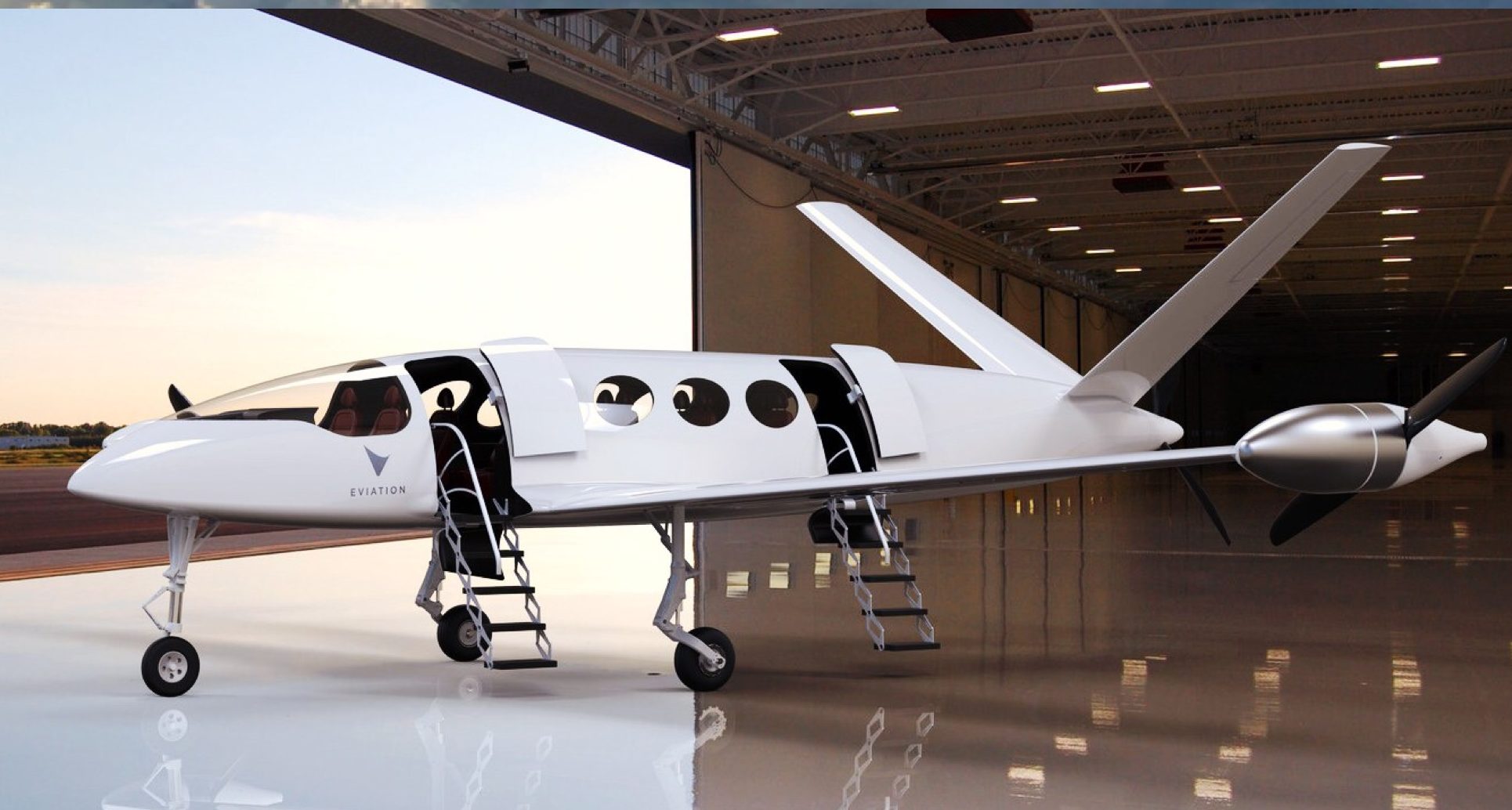
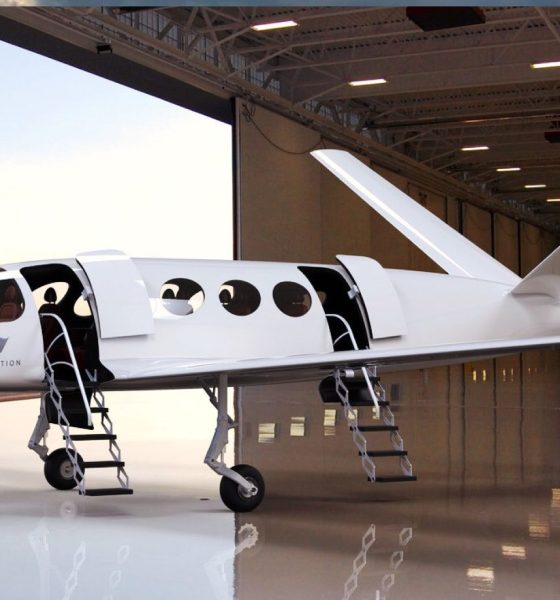
News
Tesla’s success ushers in a new era of electric flight
Electric flight may not be as far away as we once thought. In the next decade, aircraft are set to see dramatic changes as companies both large and small work to bring fully electric and hybrid flight to market. Airlines, manufacturers, and startups all seem to be moving towards this goal (see below). The race is clearly on and it will change the way we think about flight.
Yet as it was for the introduction of electric vehicles, the first aircraft is short range and seat just a few passengers. Their applications today are limited but to think the industry will stay in this nascent stage would be a mistake. Successes in these small and short-range aircraft will translate forward into larger and longer-range aircraft. The companies that find success here will emerge as leaders in a new era of electric flight.

Companies working on electric flight
On the Market Today:
First, it’s important to appreciate that only recently have small electric powered aircraft gone from concepts to commercial use.
Pipistrel’s Alpha Electro is one of these all-electric aircraft. It’s meant primarily for pilot training and just received its airworthiness certification from the FAA in April 2018, becoming the first in the USA to do so. The Alpha Electro only seats two people and is good for an hour of flight plus reserves. That might not sound like much but it could be disruptive. Pipistrel says the aircraft cuts beginner pilot training costs by as much as 70% while producing zero emissions and low noise.
In China, the Ruixiang RX1E is a similar style trainer sold there commercially. They also have a new, longer-range model that was recently tested, the RX1E-A. With a two-hour flight time the new version doubles its previous capabilities. At this size of aircraft the technology is getting close to parity with comparable gasoline-powered aircraft, like the Cessna 162 which has a flight time of about three hours.
Full parity might be here sooner than you think. Coming small electric aircraft have better specs and more seating, with many nearly ready for certification (pictured below). Pipistrel has their Panthera (top right), which will hold four passengers and will come in options for combustion, hybrid, and all-electric powertrains. There’s also BYE Aerospace in Colorado, which has a four-seater in development and just completed the first test flight of the two-seater Sun Flyer 2 — it has a flight time of 3 hours. Ruixiang also announced they have a 4-seater aircraft in development. The other important consideration is that their initial costs appear to be comparable to combustion options as well.
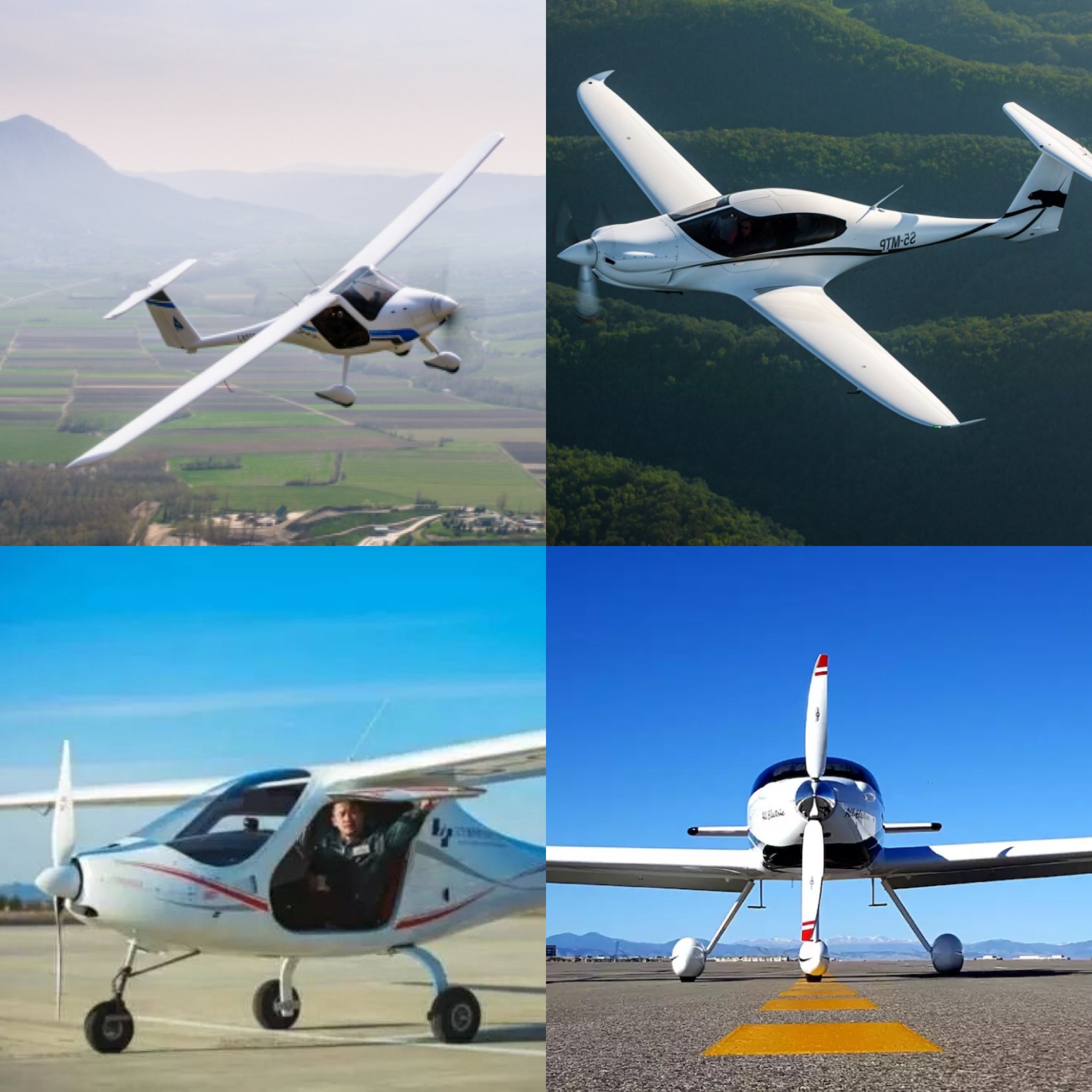
Pipistrel Alpha Electro (top left), Pipistrel Panthera (top right), Ruixiang RX1E-A (bottom left), BYE Aerospace Sunflyer 2 (bottom right)
Looking at these options, some will say that an electric aircraft is an isolated niche and for now, that’s mostly correct. These are small aircraft with limited applications. Yet when the Nissan Leaf and even the Tesla Roaster first came out many believed electric cars were a niche technology too. The range was too short, seating was too small, and costs were too high to realistically consider the technology going mainstream. Now we are in the midst of a market transformation, with automakers pouring billions into their EV programs and countries announcing they are phasing out combustion vehicles.
Market Transformation – Near-Term Preproduction:
The next major step for electric flight appears to be in small commuter aircraft. Aircraft that weigh less than 12,500 lbs, carry 5 to 20 passengers and travel up to 750 miles. In addition to regional commuter needs, they may also serve recreational and business purposes. If small aircraft are like the Tesla Roadster then these are like the Model S. They have more seats, longer range, and are made in higher volumes.
The use case of short range regional commuters is almost perfect for electrification. Much of their flight is spent just getting up to altitude, where cruising achieves the greatest efficiency. The time spent cruising however is relatively short and the result is that such regional flights are inherently less efficient than those over greater distances. On the plus side the high operating costs are a great opportunity for electrification. Consider that a turbine engine achieves an efficiency of around 55% at cruising, but on ascent that efficiency can drop by half (~25%). By comparison, an electric motor has efficiencies greater than 95%.
One of the companies working to electrify these regional aircraft is Wright Electric, based out of Los Angeles. They recently announced plans to bring to market a 9-seat electrified aircraft with a range of at least 340 miles. According to their website that would cover the distance of nearly 44% of all flights. The announcement is part of their new partnership with JetEx, a fixed-base operator based in Saudi Arabia with operations in over 30 countries. I recently spoke with Wright Electric’s CEO Jeff Engler about their coming aircraft and where he see’s the industry going. The first thing that surprised me is that their aircraft could be on the market very soon.
“We are certain that the first flight test will take place next year. It could be on the market in just over two years.” – Jeff Engler, CEO of Wright Electric
That means that sometime towards the end of 2020 or beginning of 2021 they could be in their air, operating with paying customers.
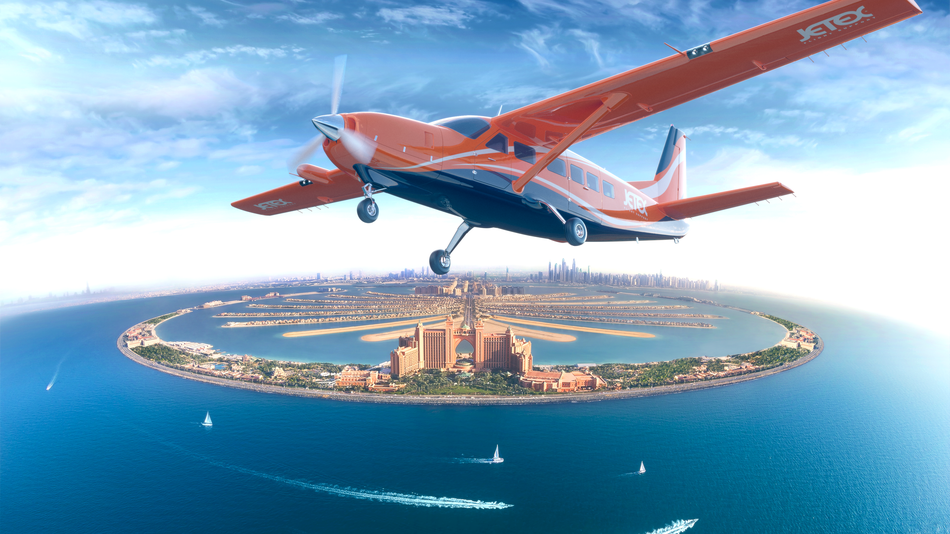
Wright Electric / JetEx
Their aircraft is intended for intercity travel and recreational activities Jeff said, but it’s not the end goal. In fact, their approach may be familiar to fans of electric cars.
“Our plan is similar to the Tesla approach, in the sense that they started with the Roadster and then scaled up to larger more mass market vehicles. Our first plane to market will be a premium aircraft meant to travel short distances with a small number of passengers… perfect for intercity flights and recreational activities like skydiving. This initial program is the springboard for development of larger longer-range aircraft”. – Jeff Engler, CEO of Wright Electric
In regards to the technology Jeff said they are developing the hybrid and all electric powertrains concurrently. He noted that battery advancements will dictate the transition to fully electric flight but in the interim, hybrid solutions will significantly reduce fuel costs, noise, and pollution. With restrained enthusiasm, he was cautiously optimistic about the coming advances in battery technology. Yet battery technology isn’t holding them up.
The beauty of hybrid options is that as batteries improve they can be seamlessly integrated into the design, allowing more of the flight to be electric. For their electric hybrid, Wright Electric likes to use the term “helper motor”. A helper motor can run hard during takeoff and ascent to help bring the aircraft up to altitude, thereby reducing the burden on the combustion engines, improving overall efficiency, and reducing fuel consumption. Once at altitude, the combustion engines can take over, where they operate most efficiently.
Even without being fully electric hybrid aircraft would have surprising benefits to fuel economy, pollution, and noise. Wright Electric has estimated the potential for reducing fuel use by nearly 2/3’s, while fellow electric aircraft startup Zunum Aero indicated 40% to 80% operating savings. Zunum Aero also noted a potential 70% reduction in community noise.
More Regional Commuter Aircraft are Coming Too:
Wright electric isn’t the only one working in this space. Other startups are also pushing the industry forward and they’ve partnered with established manufacturers and airlines to help make it happen. It’s similar to the approach Tesla took early on by partnering with established companies like Daimler and Toyota, and even in their recent developments of the Semi.
Zunum Aero is another one of the leaders in the electric aircraft space, based out of the west coast near Seattle. They are developing a 12-seat hybrid-electric, with a targeted range of over 700 miles. First test flights are targeted for 2019 and commercial operation is planned for 2022 (pictured below). Their partners include Boeing and JetBlue and just last week JetSuite announced they would order up to 100 of Zunum’s hybrid aircraft.
Eviation Aircraft is an Israel based company and has great ambitions for their first aircraft named “Alice”. It will be a 9-seat 650 mile aircraft and most importantly “all-electric”. They are targeting brining it to market by 2021. Is all-electric flight on that scale possible by 2021? They’ve said the aircraft will use a 950 kWh battery and just recently signed Kokam as their battery supplier, so they seem to be serious. I hope they make it happen. Alice is gorgeous.
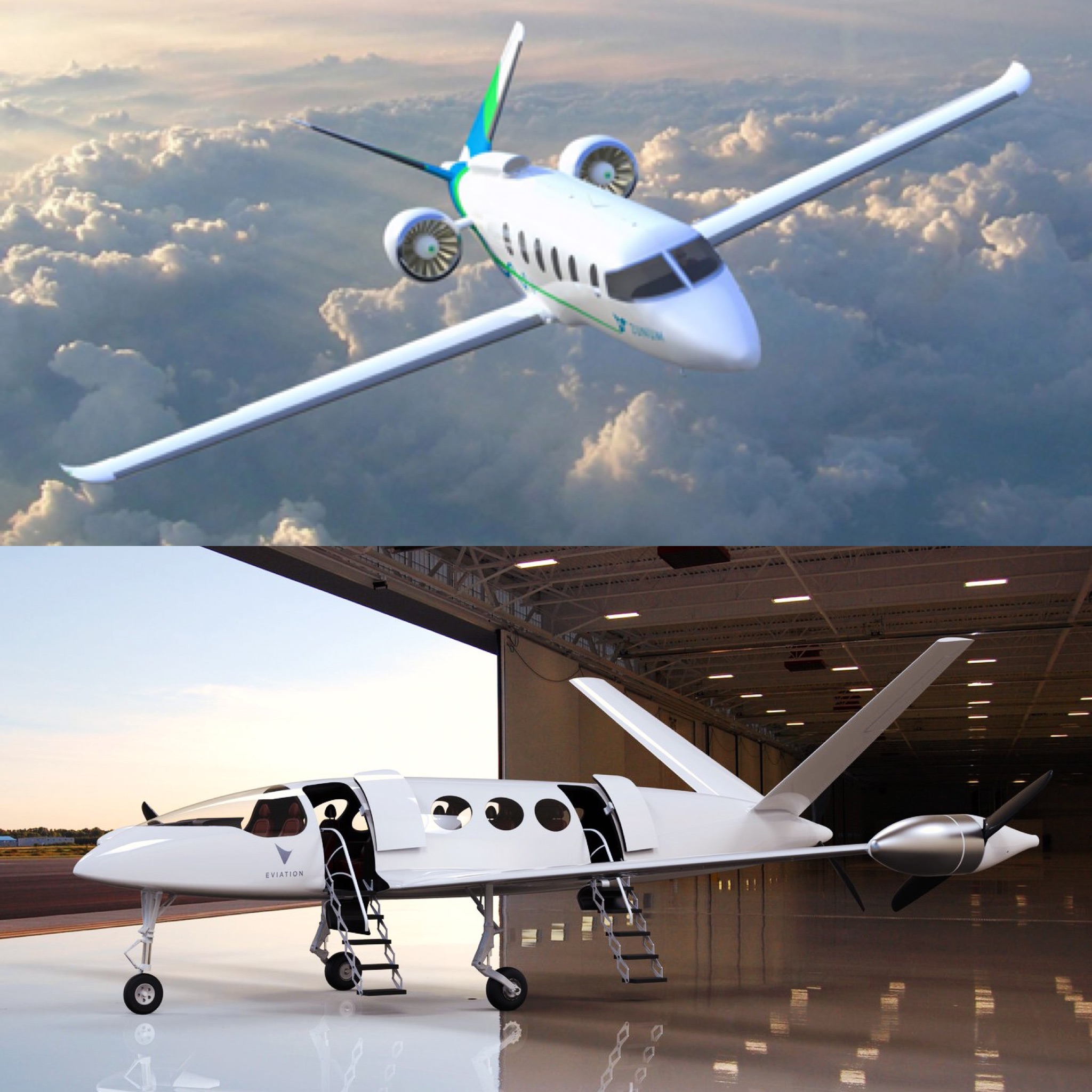
Zunum Aero (top), Eviation Aircraft (bottom)
Other Exciting Developments Coming Soon:
In the heavyweight division Airbus, Siemens, and Rolls-Royce have their own partnership, working together on their E-Fan X after the successful small electric E-Fan program. The E-Fan X will be a hybrid demonstrator aircraft based on the 100-seat BAe146. The first test flight is planned for 2020 and they are looking to bring a similarly sized hybrid aircraft to market sometime around 2030. Originally they were going to bring a small electric trainer based on the E-Fan to market in 2017 or 2018 but said the pace of development has set their ambitions upwards. There’s also Airbus’s subsidiary A3 which is working on a small all-electric vertical takeoff and landing aircraft.

E-Fan X
Vertical takeoff and landing aircraft are extremely interesting. They could be the biggest disrupters of all (covered in more detail in a follow up article, part 2). They too seem to be much closer than people think. For flying short distances they don’t actually need massive advancements in battery technology. Norway’s Avinor, their national aircraft operator, seems to indicate the mid 2020’s for practical operation.
Companies like Uber, Lilium, Kittyhawk, A3, and many more are developing electric aircraft capable of vertical takeoff and landing. They look more like flying cars than airplanes and that seems to be the point. These “air-taxis” are meant for hyper-local travel. Something you would hop onto downtown and take to get to across the city or to another nearby city. Lilium is a relatively new startup, founded in 2015, but has already made significant advancements in the space. They’ve already had their first full-scale test flight which is viewable below. Watching it lift off is almost magical. They brought on former Ferrari designer Frank Stephenson to head their design program and raised $90M to proceed with further development.
Lilium VTOL
Final Thoughts and Intro to Part 2
For fully electric flight a lot depends on batteries, but the technology is already finding applications in short-range, small aircraft. Increasing larger hybrid aircraft are also set to see their application in the real world in just a few years and will yield substantial benefits of their own. These moves should not be discounted. They are a prelude of what’s to come.
At this point, you may be wondering exactly what are the benefits of electric flight. That’s the focus of the second part of this article, coming out soon. They are substantial and will drive the industry forward with haste.

News
Tesla FSD (Supervised) blows away French journalist after test ride
Cadot described FSD as “mind-blowing,” both for the safety of the vehicle’s driving and the “humanity” of its driving behaviors.
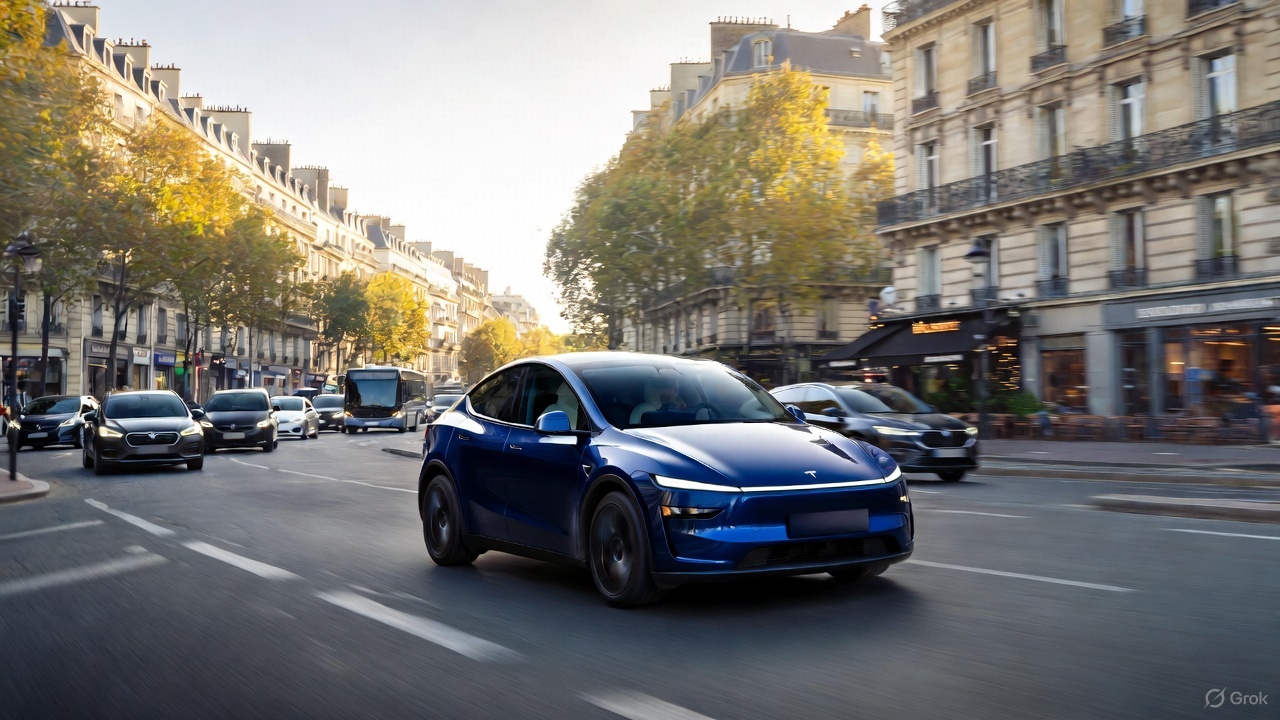
Tesla’s Full Self-Driving (Supervised) seems to be making waves in Europe, with French tech journalist Julien Cadot recently sharing a positive first-hand experience from a supervised test drive in France.
Cadot, who tested the system for Numerama after eight years of anticipation since early Autopilot trials, described FSD as “mind-blowing,” both for the safety of the vehicle’s driving and the “humanity” of its driving behaviors.
Julien Cadot’s FSD test in France
Cadot announced his upcoming test on X, writing in French: “I’m going to test Tesla’s FSD for Numerama in France. 8 years I’ve been waiting to relive the sensations of our very first contact with the unbridled Autopilot of the 2016s.” He followed up shortly after with an initial reaction, writing: “I don’t want to spoil too much because as media we were allowed to film everything and I have a huge video coming… But: it’s mind-blowing! Both for safety and for the ‘humanity’ of the choices.”
His later posts detailed FSD’s specific maneuvers that he found particularly compelling. These include the vehicle safely overtaking a delivery truck by inches, something Cadot said he personally would avoid to protect his rims, but FSD handled flawlessly. He also praised FSD’s cyclist overtakes, as the system always maintained the required 1.5-meter distance by encroaching on the opposite lane when clear. Ultimately, Cadot noted FSD’s decision-making prioritized safety and advancement, which is pretty remarkable.
FSD’s ‘human’ edge over Autopilot
When asked if FSD felt light-years ahead of standard Autopilot, Cadot replied: “It’s incomparable, it’s not the same language.” He elaborated on scenarios like bypassing a parked delivery truck across a solid white line, where FSD assessed safety and proceeded just as a human driver might, rather than halting indefinitely. This “humanity” impressed Cadot the most, as it allowed FSD to fluidly navigate real-world chaos like urban Paris traffic.
Tesla is currently hard at work pushing for the rollout of FSD to several European countries. Recent reports have revealed that Tesla has received approval to operate 19 FSD test vehicles on Spain’s roads, though this number could increase as the program develops. As per the Dirección General de Tráfico (DGT), Tesla would be able to operate its FSD fleet on any national route across Spain. Recent job openings also hint at Tesla starting FSD tests in Austria. Apart from this, the company is also holding FSD demonstrations in Germany, France, and Italy.
Elon Musk
Tesla Optimus shows off its newest capability as progress accelerates

Tesla Optimus showed off its newest capability as progress on the project continues to accelerate toward an ultimate goal of mass production in the coming years.
Tesla is still developing Optimus and preparing for the first stages of mass production, where units would be sold and shipped to customers. CEO Elon Musk has always marketed the humanoid robot as the biggest product in history, even outside of Tesla, but of all time.
He believes it will eliminate the need to manually perform monotonous tasks, like cleaning, mowing the lawn, and folding laundry.
However, lately, Musk has revealed even bigger plans for Optimus, including the ability to relieve humans of work entirely within the next 20 years.
JUST IN: Elon Musk says working will be ‘optional’ in less than 20 years because of AI and robotics. pic.twitter.com/l3S5kl5HBB
— Watcher.Guru (@WatcherGuru) November 30, 2025
Development at Tesla’s Artificial Intelligence and Robotics teams has progressed, and a new video was shown of the robot taking a light jog with what appeared to be some pretty natural form:
Just set a new PR in the lab pic.twitter.com/8kJ2om7uV7
— Tesla Optimus (@Tesla_Optimus) December 2, 2025
Optimus has also made several public appearances lately, including one at the Neural Information Processing Systems, or NeurIPS Conference. Some spectators shared videos of Optimus’s charging rig, as well as its movements and capabilities, most interestingly, the hand:
You have to hand it to Elon 🤟 pic.twitter.com/fZKDlmGAbe
— Ric Burton · NeurIPS 2025 (@_ricburton) December 2, 2025
The hand, forearm, and fingers have been one of the most evident challenges for Tesla in recent times, especially as it continues to work on its 3rd Generation iteration of Optimus.
Musk said during the Q3 Earnings Call:
“I don’t want to downplay the difficulty, but it’s an incredibly difficult thing, especially to create a hand that is as dexterous and capable as the human hand, which is incredible. The human hand is an incredible thing. The more you study the human hand, the more incredible you realize it is, and why you need four fingers and a thumb, why the fingers have certain degrees of freedom, why the various muscles are of different strengths, and fingers are of different lengths. It turns out that those are all there for a reason.”
The interesting part of the Optimus program so far is the fact that Tesla has made a lot of progress with other portions of the project, like movement, for example, which appears to have come a long way.
However, without a functional hand and fingers, Optimus could be rendered relatively useless, so it is evident that it has to figure this crucial part out first.
Elon Musk
Elon Musk and Tesla try to save legacy automakers from Déjà vu
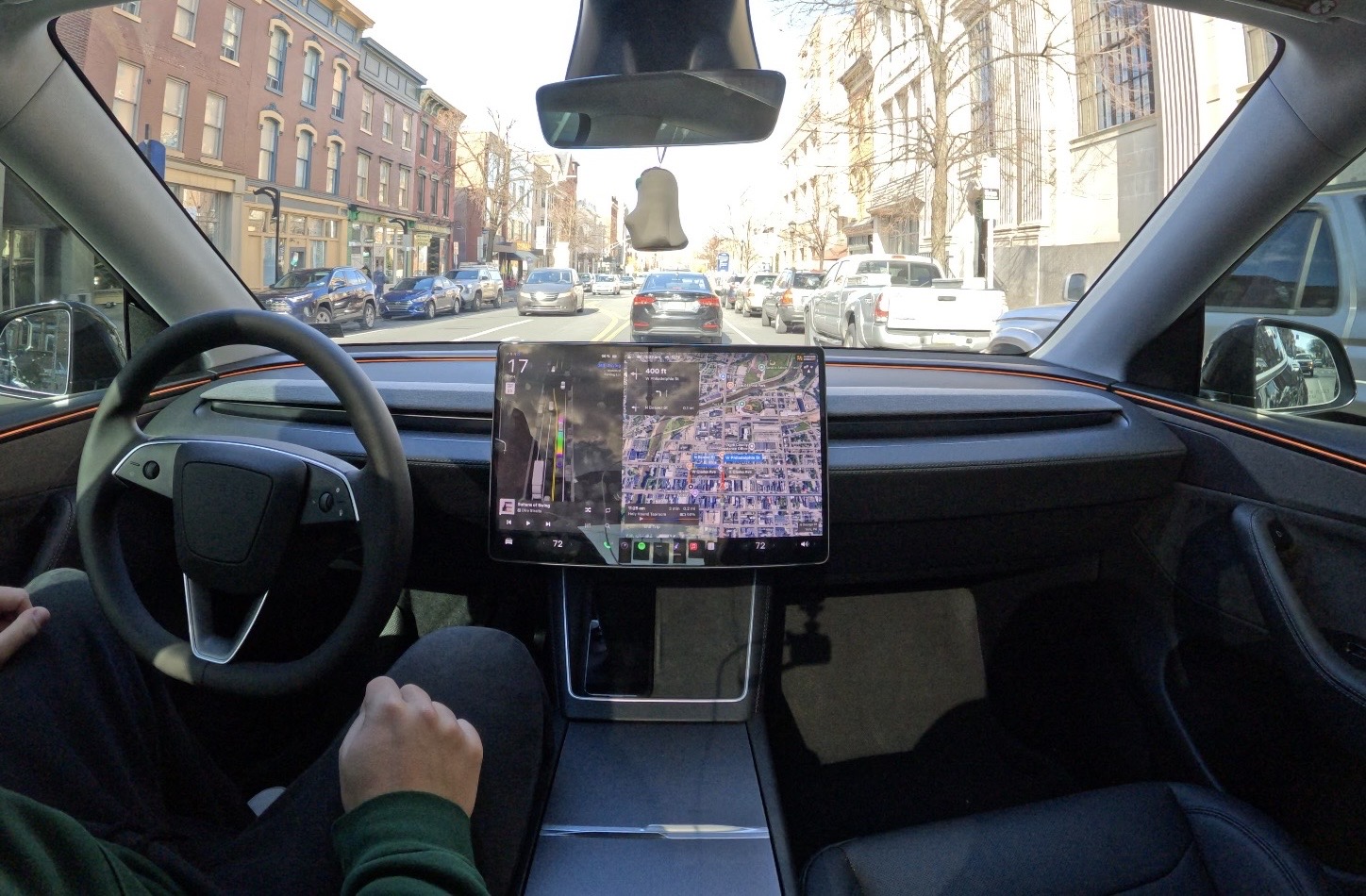
Elon Musk said in late November that he’s “tried to warn” legacy automakers and “even offered to license Tesla Full Self-Driving, but they don’t want it,” expressing frustration with companies that refuse to adopt the company’s suite, which will eventually be autonomous.
Tesla has long established itself as the leader in self-driving technology, especially in the United States. Although there are formidable competitors, Tesla’s FSD suite is the most robust and is not limited to certain areas or roadways. It operates anywhere and everywhere.
The company’s current position as the leader in self-driving tech is being ignored by legacy automakers, a parallel to what Tesla’s position was with EV development over a decade ago, which was also ignored by competitors.
The reluctance mirrors how legacy automakers initially dismissed EVs, only to scramble in catch-up mode years later–a pattern that highlights their historical underestimation of disruptive innovations from Tesla.
Elon Musk’s Self-Driving Licensing Attempts
Musk and Tesla have tried to push Full Self-Driving to other car companies, with no true suitors, despite ongoing conversations for years. Tesla’s FSD is aiming to become more robust through comprehensive data collection and a larger fleet, something the company has tried to establish through a subscription program, free trials, and other strategies.
Tesla CEO Elon Musk sends rivals dire warning about Full Self-Driving
However, competing companies have not wanted to license FSD for a handful of speculative reasons: competitive pride, regulatory concerns, high costs, or preference for in-house development.
Déjà vu All Over Again
Tesla tried to portray the importance of EVs long ago, as in the 2010s, executives from companies like Ford and GM downplayed the importance of sustainable powertrains as niche or unprofitable.
Musk once said in a 2014 interview that rivals woke up to electric powertrains when the Model S started to disrupt things and gained some market share. Things got really serious upon the launch of the Model 3 in 2017, as a mass-market vehicle was what Tesla was missing from its lineup.
This caused legacy companies to truly wake up; they were losing market share to Tesla’s new and exciting tech that offered less maintenance, a fresh take on passenger auto, and other advantages. They were late to the party, and although they have all launched vehicles of their own, they still lag in two major areas: sales and infrastructure, leaning on Tesla for the latter.
I’ve tried to warn them and even offered to license Tesla FSD, but they don’t want it! Crazy …
When legacy auto does occasionally reach out, they tepidly discuss implementing FSD for a tiny program in 5 years with unworkable requirements for Tesla, so pointless. 🤷♂️
🦕 🦕
— Elon Musk (@elonmusk) November 24, 2025
Musk’s past warnings have been plentiful. In 2017, he responded to critics who stated Tesla was chasing subsidies. He responded, “Few people know that we started Tesla when GM forcibly recalled all electric cars from customers in 2003 and then crushed them in a junkyard,” adding that “they would be doing nothing” on EVs without Tesla’s efforts.
Companies laughed off Tesla’s prowess with EVs, only to realize they had made a grave mistake later on.
It looks to be happening once again.
A Pattern of Underestimation
Both EVs and self-driving tech represent major paradigm shifts that legacy players view as threats to their established business models; it’s hard to change. However, these early push-aways from new tech only result in reactive strategies later on, usually resulting in what pains they are facing now.
Ford is scaling back its EV efforts, and GM’s projects are hurting. Although they both have in-house self-driving projects, they are falling well behind the progress of Tesla and even other competitors.
It is getting to a point where short-term risk will become a long-term setback, and they may have to rely on a company to pull them out of a tough situation later on, just as it did with Tesla and EV charging infrastructure.
Tesla has continued to innovate, while legacy automakers have lagged behind, and it has cost them dearly.
Implications and Future Outlook
Moving forward, Tesla’s progress will continue to accelerate, while a dismissive attitude by other companies will continue to penalize them, especially as time goes on. Falling further behind in self-driving could eventually lead to market share erosion, as autonomy could be a crucial part of vehicle marketing within the next few years.
Eventually, companies could be forced into joint partnerships as economic pressures mount. Some companies did this with EVs, but it has not resulted in very much.
Self-driving efforts are not only a strength for companies themselves, but they also contribute to other things, like affordability and safety.
Tesla has exhibited data that specifically shows its self-driving tech is safer than human drivers, most recently by a considerable margin. This would help with eliminating accidents and making roads safer.
Tesla’s new Safety Report shows Autopilot is nine times safer than humans
Additionally, competition in the market is a good thing, as it drives costs down and helps innovation continue on an upward trend.
Conclusion
The parallels are unmistakable: a decade ago, legacy automakers laughed off electric vehicles as toys for tree-huggers, crushed their own EV programs, and bet everything on the internal-combustion status quo–only to watch Tesla redefine the industry while they scrambled for billions in catch-up capital.
Today, the same companies are turning down repeated offers to license Tesla’s Full Self-Driving technology, insisting they can build better autonomy in-house, even as their own programs stumble through recalls, layoffs, and missed milestones. History is not merely rhyming; it is repeating almost note-for-note.
Elon Musk has spent twenty years warning that the auto industry’s bureaucratic inertia and short-term thinking will leave it stranded on the wrong side of technological revolutions. The question is no longer whether Tesla is ahead–it is whether the giants of Detroit, Stuttgart, and Toyota will finally listen before the next wave leaves them watching another leader pull away in the rear-view mirror.
This time, the stakes are not just market share; they are the very definition of what a car will be in the decades ahead.








